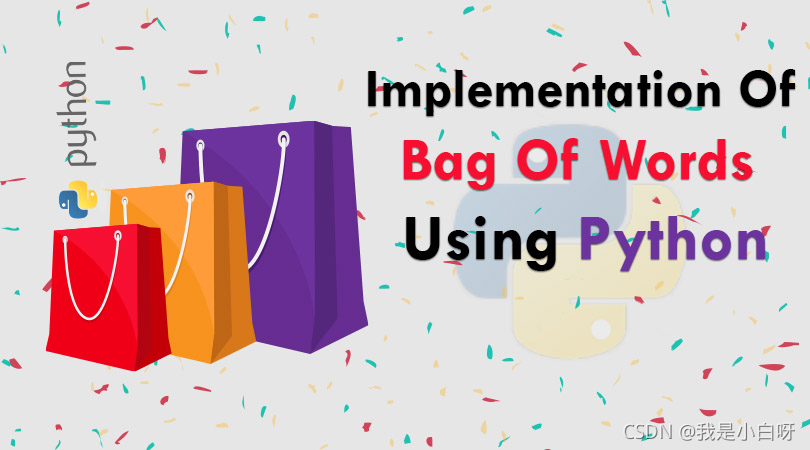【NLP】⚠️学不会打我! 半小时学会基本操作 3⚠️ 词袋模型
【摘要】
【NLP】⚠️学不会打我! 半小时学会基本操作 3⚠️ 词袋模型
概述词袋模型向量化
概述
从今天开始我们将开启一段自然语言处理 (NLP) 的旅程. 自然语言处理可以让来处理, 理解, ...
概述
从今天开始我们将开启一段自然语言处理 (NLP) 的旅程. 自然语言处理可以让来处理, 理解, 以及运用人类的语言, 实现机器语言和人类语言之间的沟通桥梁.

词袋模型
词袋模型 (Bag of Words Model) 能帮助我们把一个句子转换为向量表示. 词袋模型把文本看作是无序的词汇集合, 把每一单词都进行统计.

向量化
词袋模型首先会进行分词, 在分词之后. 通过通过统计在每个词在文本中出现的次数. 我们就可以得到该文本基于词语的特征, 如果将各个文本样本的这些词与对应的词频放在一起, 就是我们常说的向量化.

例子:
import jieba
from gensim import corpora
# 定义标点符号
punctuation = [",", "。", ":", ";", "?", "!"]
# 定义语料
content = [
"今天天气真不错!",
"明天要下雨?",
"后天要打雷。"
]
# 分词
seg = [jieba.lcut(con) for con in content]
print("语料:", seg)
# 去除标点符号
tokenized = seg.copy()
for s in tokenized:
for p in punctuation:
if p in s:
s.remove(p)
print("去除标点:", tokenized)
# tokenized是去标点之后的
dictionary = corpora.Dictionary(seg)
print("词袋模型:", dictionary)
# 保存词典
dictionary.save('deerwester.dict')
# 查看字典和下标id的映射
print("编号:", dictionary.token2id)
- 1
- 2
- 3
- 4
- 5
- 6
- 7
- 8
- 9
- 10
- 11
- 12
- 13
- 14
- 15
- 16
- 17
- 18
- 19
- 20
- 21
- 22
- 23
- 24
- 25
- 26
- 27
- 28
- 29
- 30
- 31
- 32
- 33
- 34
输出结果:
Building prefix dict from the default dictionary ...
Loading model from cache C:\Users\Windows\AppData\Local\Temp\jieba.cache
Loading model cost 1.140 seconds.
Prefix dict has been built successfully.
语料: [['今天天气', '真不错', '!'], ['明天', '要', '下雨', '?'], ['后天', '要', '打雷', '。']]
去除标点: [['今天天气', '真不错'], ['明天', '要', '下雨'], ['后天', '要', '打雷']]
词袋模型: Dictionary(7 unique tokens: ['今天天气', '真不错', '下雨', '明天', '要']...)
编号: {'今天天气': 0, '真不错': 1, '下雨': 2, '明天': 3, '要': 4, '后天': 5, '打雷': 6}
- 1
- 2
- 3
- 4
- 5
- 6
- 7
- 8

文章来源: iamarookie.blog.csdn.net,作者:我是小白呀,版权归原作者所有,如需转载,请联系作者。
原文链接:iamarookie.blog.csdn.net/article/details/120125023
【版权声明】本文为华为云社区用户转载文章,如果您发现本社区中有涉嫌抄袭的内容,欢迎发送邮件进行举报,并提供相关证据,一经查实,本社区将立刻删除涉嫌侵权内容,举报邮箱:
cloudbbs@huaweicloud.com
- 点赞
- 收藏
- 关注作者


评论(0)